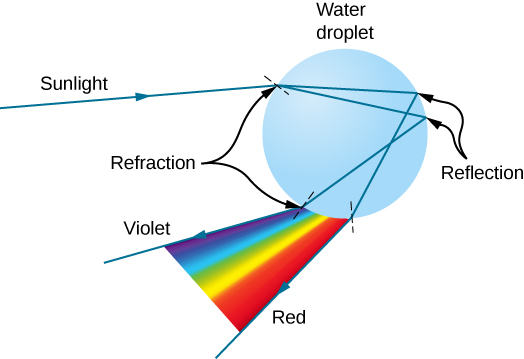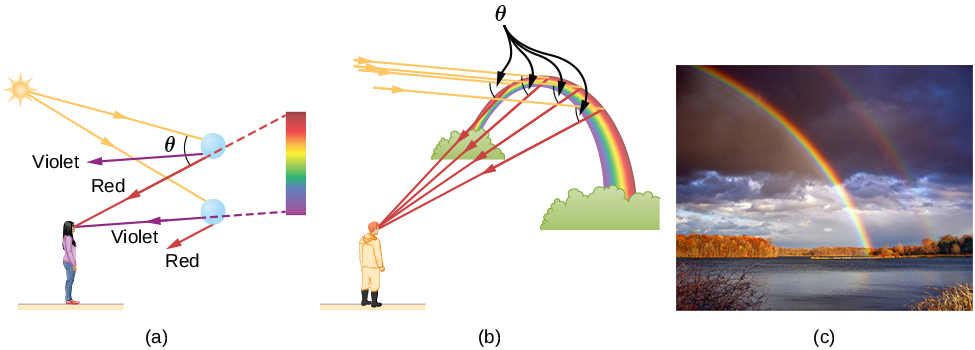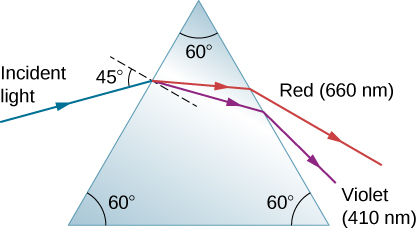| << Chapter < Page | Chapter >> Page > |


Dispersion may produce beautiful rainbows, but it can cause problems in optical systems. White light used to transmit messages in a fiber is dispersed, spreading out in time and eventually overlapping with other messages. Since a laser produces a nearly pure wavelength, its light experiences little dispersion, an advantage over white light for transmission of information. In contrast, dispersion of electromagnetic waves coming to us from outer space can be used to determine the amount of matter they pass through.
Is it possible that total internal reflection plays a role in rainbows? Explain in terms of indices of refraction and angles, perhaps referring to that shown below. Some of us have seen the formation of a double rainbow; is it physically possible to observe a triple rainbow?

A high-quality diamond may be quite clear and colorless, transmitting all visible wavelengths with little absorption. Explain how it can sparkle with flashes of brilliant color when illuminated by white light.
In addition to total internal reflection, rays that refract into and out of diamond crystals are subject to dispersion due to varying values of n across the spectrum, resulting in a sparkling display of colors.
(a) What is the ratio of the speed of red light to violet light in diamond, based on [link] ? (b) What is this ratio in polystyrene? (c) Which is more dispersive?
A beam of white light goes from air into water at an incident angle of . At what angles are the red (660 nm) and violet (410 nm) parts of the light refracted?
for red, for violet
By how much do the critical angles for red (660 nm) and violet (410 nm) light differ in a diamond surrounded by air?
(a) A narrow beam of light containing yellow (580 nm) and green (550 nm) wavelengths goes from polystyrene to air, striking the surface at a incident angle. What is the angle between the colors when they emerge? (b) How far would they have to travel to be separated by 1.00 mm?
a. ; b. 1.3 m
A parallel beam of light containing orange (610 nm) and violet (410 nm) wavelengths goes from fused quartz to water, striking the surface between them at a incident angle. What is the angle between the two colors in water?
A ray of 610-nm light goes from air into fused quartz at an incident angle of . At what incident angle must 470 nm light enter flint glass to have the same angle of refraction?
A narrow beam of light containing red (660 nm) and blue (470 nm) wavelengths travels from air through a 1.00-cm-thick flat piece of crown glass and back to air again. The beam strikes at a incident angle. (a) At what angles do the two colors emerge? (b) By what distance are the red and blue separated when they emerge?
A narrow beam of white light enters a prism made of crown glass at a incident angle, as shown below. At what angles, and , do the red (660 nm) and violet (410 nm) components of the light emerge from the prism?

for red, for violet

Notification Switch
Would you like to follow the 'University physics volume 3' conversation and receive update notifications?